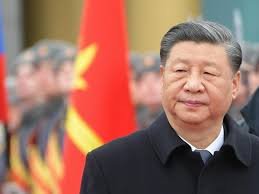
By Priscila Miranda
The concept of sovereignty is too important to be handled carelessly. We must champion it without falling into the trap of turning it into a purely political banner. Sovereignty is about a nation’s economic security. It’s about putting money in the pockets of Brazilian companies and citizens. When we talk about sovereignty in the streaming market, we aren’t dealing with some abstract, ideological issue. We are talking about the economy, plain and simple.
The central question is a no-brainer: how do we fund local Brazilian audiovisual production so it can level up, advance, and become a powerhouse? How do we protect and grow an industry that creates jobs and generates income right here in Brazil? The answers to these questions will determine whether the country has control over its own culture and the economic resources it generates.
That said, let’s be clear: regulating streaming in Brazil is a matter of national sovereignty. We’re talking about video-on-demand services like Netflix, Amazon Prime Video, Disney+, Globoplay, and YouTube—platforms that let users watch content whenever they want, on their own time.
Brazil just pushed through Bill 8.889/2017 in the Chamber of Deputies, which sets the rules for these platforms. The vote went down between November 4th and 5th, 2025. The bill now needs to pass the Federal Senate before it lands on the president’s desk for signing. The law introduces a “Condecine” fee, a levy of 0.1% to 4% on the platforms’ annual gross revenue.
I have serious issues with how this law was debated and rushed through. It weakens the Brazilian state. It’s not a good deal for Brazil. Urgent fixes are needed in the Senate to bring stability to the audiovisual sector. The problem isn’t just the percentage they’re charging or the quotas for national content. The problem is the law’s fundamental architecture.
The most critical flaw is that the collected funds won’t go to the Audiovisual Sector Fund. Instead, they will be managed by the very foreign platforms that are supposed to be regulated—and let’s be real, they haven’t been effectively reined in yet. This turns public money into private cash. It’s the outsourcing and privatization of cultural policy. The state is dropping the ball on its core function and handing corporations the keys to decide what constitutes national culture.
Brazil is one of the most significant streaming markets in the world. It’s Netflix’s second-largest market, with 20.6 million subscribers, right behind the United States. The country accounts for 8.3% of the global market, moving R$ 49.5 billion a year. Seventy-five percent of Brazilians hit up streaming platforms daily.
Streaming penetration is also huge: 43.4% of Brazilian households have access to at least one platform, representing 32.7 million homes and 95.1 million people. On average, Brazilians subscribe to 3.8 platforms—that’s more than Americans, who average two. The average subscriber spends R$ 118 per month.
The growth potential is off the charts. The number of subscribers is projected to jump from 60.2 million in 2023 to 85.4 million in 2028, according to the most conservative market forecasts—an average annual growth of 9.5%, well above the roughly 2.6% seen recently in the U.S. Brazil is on track to become the third-largest market for free, ad-supported streaming by 2029, trailing only the U.S. and the UK.
In Latin America, Brazil is the undisputed leader in the video-on-demand (VOD) market. The country moves about R$ 49.5 billion a year, leaving Mexico (R$ 16 billion) and Argentina (R$ 4.9 billion) in the dust. However, when it comes to movie theater exhibition, Mexico is still the region’s biggest market, with over 7,400 active screens.
Brazil, on the other hand, has seen its cinema network shrink and its cinematic presence weaken after almost a decade without solid public policies for the sector. The truth is, since the impeachment of President Dilma Rousseff in 2016, the country has never fully gotten its act together on a national audiovisual strategy. The gutting of ANCINE, the paralysis of the Sector Fund, and the stop-and-start of support and preservation programs have resulted in a nearly lost decade for Brazilian cinema—*nearly*, because there were some brilliant exceptions. But overall, the drop in average film production has been brutal.
It’s in this context of institutional fragility that the current streaming law has emerged—rushed through, without broad debate or proper public backing, repeating the same cycle of winging it that decimated our domestic film production.
Although Mexico is now the largest movie exhibition market in Latin America, it faces the same lack of streaming regulation as Brazil. There, no law has been passed, and the platforms continue to operate freely, with no obligations to invest in local content or contribute to public funds. In other words, the Mexican situation mirrors Brazil’s: countries with vibrant creative industries but weak legal frameworks facing down global conglomerates.
By fast-tracking this law, Brazil isn’t just shooting itself in the foot domestically—it could also set a dangerous precedent for all of Latin America. If the Brazilian model is replicated without corrections, the entire continent risks institutionalizing cultural dependency, handing over its collective imagination to transnational platforms. Deregulation becomes a regional virus: a neocolonialism disguised as modernization, where each country negotiates its own weakness in isolation.
Portugal charges the same 4%, but the money is respected as a public resource, managed by the Instituto do Cinema e Audiovisual, and is fully funneled back into the ecosystem: production, theaters, digitization, training, and international promotion. The result was a 35% growth in national production between 2020 and 2024, right in the middle of the pandemic.
The comparison with Portugal isn’t about setting the bar low for Brazil, but to show that even in a small country, the model works because there is public management and transparency. Here, the same percentage gets diluted and is still managed by the platforms themselves.
Europe has 3,269 VOD services, 86% of which are national. The European video-on-demand market generated €23 billion in 2023, with €21.3 billion coming from subscription services alone. The most important data point: 60% of the funding for the European audiovisual sector comes from public policies, according to the European Audiovisual Observatory. European streaming grows *with* the state, not in spite of it.
The Economics of Series
A recent Brazilian series, *Donos do Jogo*, produced by one of the 50 companies that backed the law, cost about R$ 70 million for eight episodes. That sounds like a lot, but it isn’t. The French series *Lupin*, starring Omar Sy, cost around €3.5 million per episode. In the U.S., series like *Breaking Bad* cost between $3 and $3.5 million per episode, reaching up to $6 million in its final seasons.
Brazil produces on the cheap. But even when a Brazilian series is shown in over 130 countries, the local producer sees none of that upside. They get 10% of the budget as a service fee, but no royalties or profit participation. The global rights are kept entirely by the platform. The bottom line: Brazil exports creativity and talent, but imports the profit.
Copyright and the World’s Memory
Copyright is what allows art to endure and artists to get paid. It’s the reason American studios remain so powerful: they live off catalogs that have been generating income for over a hundred years. A classic example is Orson Welles’s *Citizen Kane*—a film that ruined the director’s career but to this day brings in millions for the studio that produced it. When a Brazilian production company gives up its rights, it’s giving up its financial sustainability and a lasting cultural legacy.
The BRICS and the Silence of the Muses
South Africa, with an audiovisual GDP of $600 million, operates the Film Rebate Scheme, which rebates up to 35% of production costs and has attracted over 120 international productions since 2018. In 2024, Brazil finally formalized a co-production agreement with the country, brokered by Spcine and the NFVF—an important political gesture, but a late one.
South Korea invests about $5 to $6 billion per year in public cultural policies, has mandatory exhibition quotas of 73 days per year for national films, and offers rebates of up to 30%. The country also boasts a highly competitive private audiovisual industry, which reached about $13 billion in content exports in 2024.
China has 85,000 movie screens, earns $7.5 billion per year, and has a curious model: the quota isn’t to protect national content, but *foreign* content. Only up to 30% of a platform’s catalog can be composed of international productions; the rest is all Chinese content. The system was built to guarantee industrial muscle and keep profits within the country.
Russia, meanwhile, injects about $200 million per year into the Russian Cinema Fund. This is a public fund, financed mostly by state resources, created to sustain national production. It provides direct funding, co-productions with private studios, and specific support lines for animation, blockbusters, and auteur cinema. It is, in essence, a state policy to organize and protect the Russian market, guaranteeing predictability and continuity for its producers.
Brazil, however, is the only BRICS nation without a permanent cultural policy. In the silence of the muses, the industry withers.
50 Production Companies and a Secret
Out of over 12,000 registered production companies in the country, only 50 supported the law approved in the Chamber, most of them concentrated in Rio de Janeiro and São Paulo. These companies made the decision without consulting the associations they are a part of.
The sector as a whole was blindsided.
The argument was supposedly pragmatic—”better to lock in something now than wait another ten years”—but the decision-making process was rushed and lacked transparency.
It soon became clear to many that the new law could cause long-term financial damage to the entire audiovisual sector in the country, in addition to affecting our independence in production and distribution.
Just days after the vote, Videofilmes released a statement saying its signature had been added without the consent of João and Walter Salles, who publicly spoke out against the final text. The Salles brothers’ reaction carried significant symbolic and moral weight, marking an important retreat within the very group that supported the project.
Leading filmmakers and producers also came out against the law: Kleber Mendonça Filho, Ducca Rios, Laís Bodanzky, Sara Silveira, and Valkyria Gomes held a firm line in defense of a public, transparent regulation committed to strengthening the sector.
The projected revenue from the Condecine fee is about R$ 240 million per year. But the problem isn’t just the amount—it’s where it’s going. These resources will not go to the Audiovisual Sector Fund. They will be managed by the foreign platforms themselves, the very entities that haven’t even been properly regulated yet. This regulation hands the keys of the kingdom to the companies being regulated.
Handing public funds over to the platforms means giving up on the entire cultural ecosystem. The country loses control over its memory, its theaters, its festivals, and its film archives. Brazil is forfeiting the right to decide the destiny of its own collective imagination.
In a market this relevant and booming, Brazil is giving up its cultural sovereignty just as the debate about sovereignty is once again taking center stage in national politics.
For these reasons and more, the law needs serious adjustments before Senate approval.
It is absolutely essential to ensure that the resources are public and managed by Brazilian institutions and companies—not by foreign platforms that have not yet been properly brought to heel by Brazilian democracy.
By passing a law that hands over its cultural production to foreign platforms, Brazil is submitting to a new form of digital colonialism. And, as Frantz Fanon wrote, “Each generation must, out of relative obscurity, discover its mission, fulfill it, or betray it.”










